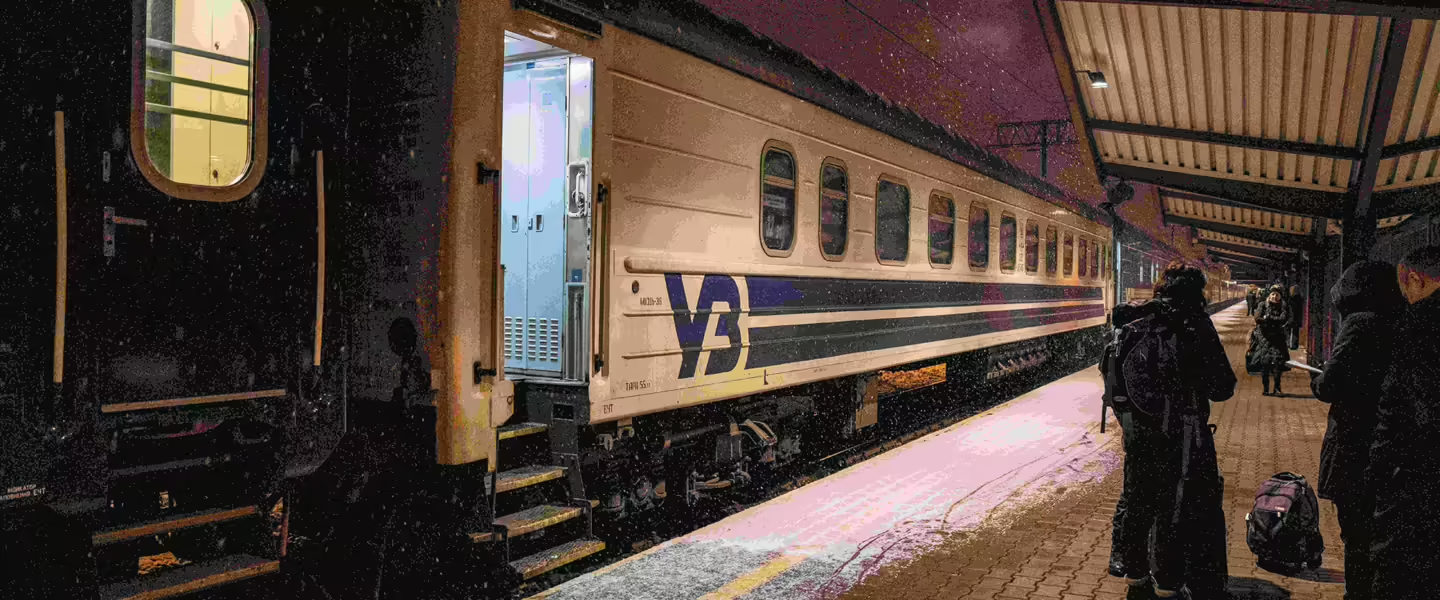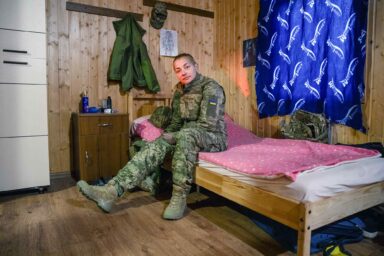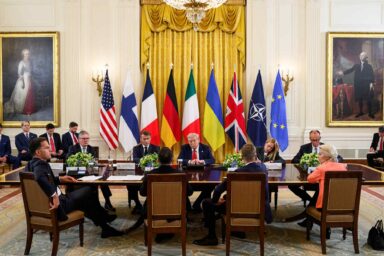With Russia increasing its bombing, the train has become an essential route in and out of Ukraine. Our intrepid reporter Anna Conkling describes what it’s like to make the trip.
|
Listen To This Story
|
It’s 5:30 a.m. on a weekday morning at the immense Berlin Hauptbahnhof Station.
The station is normally filled with a horde of passengers by midday, who pass through these seemingly endless halls headed for nearly every destination in Europe. At this early hour, however, only a relatively few passengers have succeeded in waking themselves before sunrise and moving through the sprawling station’s relatively empty halls. I am one of them.
The train I am taking heads for Poland, just two hours away. It’s operated by Polish Railways and is only the first of three trains that I need to take to reach Kyiv in Ukraine. The trip normally takes 26 hours. I have already taken it many times. It starts with Berlin to Rzepin, the first Polish city the train enters. Then it’s Rzepin to the Ukraine border at Przemyśl, and finally the night train from the Polish border to Kyiv.
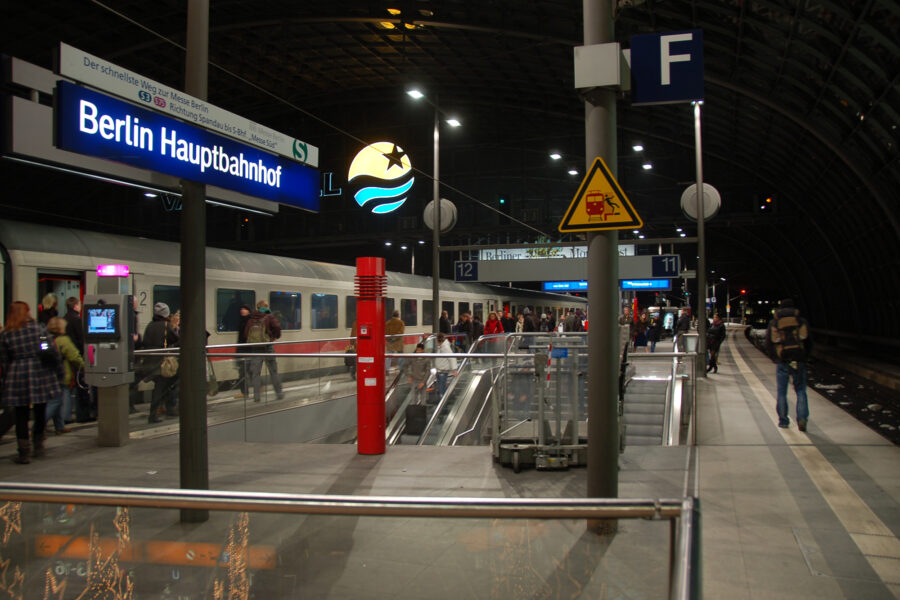
Over the last two years, tens of thousands of Ukrainians have made this journey. Most are motivated by the fact that Ukraine is a dangerous place these days thanks to Vladimir Putin’s “special military operation,” which he still hopes will end Ukraine’s existence as an independent state. The Russian invasion has made the Polish town of Przemyśl the most frequent crossing point for anyone entering or leaving Ukraine. By last December, the border had registered more than 18.1 million crossings, including refugees, journalists, and aid workers entering, leaving, and then returning to Ukraine.
In the early days of the war, the flood of refugees caught the Polish government by surprise. Aid centers were set up in Przemyśl, and free trains were made available to take refugees to all points in Europe, including Berlin and Hanover. By October last year, 1.1 million Ukrainian refugees were residing in Germany, which emerged as the second most popular destination after Poland.
As a 24-year-old journalist writing about the situation in Ukraine, I began making the lengthy trip in November 2022, nine months into Russia’s full-scale invasion. Before that, I had covered the war from afar in New York, Berlin, and Poland. The trip in November marked the first time I had actually entered Ukraine on the ground. Since then, I have made four extended trips. Each one starts the same way: I wake up in Berlin at 4:30 a.m., carry my luggage down five flights of stairs, take an Uber to the Hauptbahnhof, and board the train to Poland at around 5:30 a.m.
The journey has always been long, but it also used to be straightforward. For months my route was one direct train from Berlin to Przemyśl, a 10-hour excursion on which I could zone out and work uninterrupted on my latest stories, transcribe interviews, or scroll on social media. But last July, this changed. Gone were the days of what I thought was a more or less “easy” train route. Now I had an hour to two-hour layover at Rzepin, the first town into Poland after crossing the German border at Frankfurt an der Oder.
In contrast to other Polish train stations that have shops, restaurants, and cafes, there is nothing to do in Rzepin, at least not when the train arrives in the early morning. The station consists of a few platforms and a decrepit building still waiting for renovation. Passengers are left to the mercy of the elements. Only one restaurant is nearby, and it is usually closed when I get there. The closest grocery store is a 10-minute walk away, which means dragging all of my luggage, including my bulletproof vest and ballistic helmet, along empty streets still in the dark.
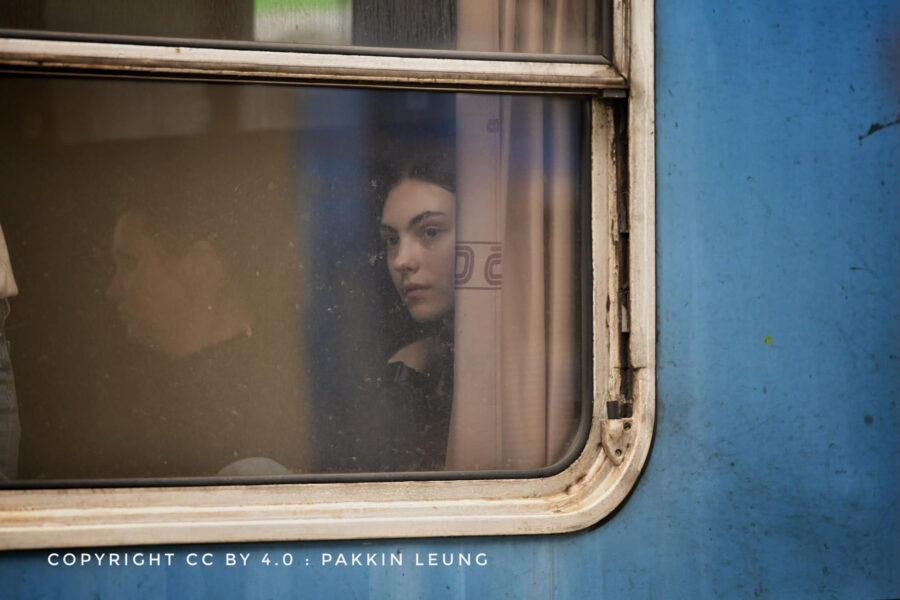
The layover is not terrible during the summer, but in February, the temperature hovered around 20 degrees F, and it was snowing. The wait for the second train seemed to last forever. The station has a heated area, but it is a converted shipping container that can only hold a few people. It’s more comfortable to sit outside in the freezing cold.
On this morning, I try to distract myself by watching a true-crime documentary on Netflix. At the station, Ukrainians, too, wait for the train to Przemyśl. For many, it is a trip taking them back home. By the time the train finally arrives, 15 minutes late, it is 8 a.m., and I am utterly frozen. Most of the Ukrainians drag their luggage to their seats, and I head for the dining car. That, too, is a dreary sight. Gray walls, a few wooden tables, bar stools, and some red plush-covered chairs. I order coffee, eggs, and toast, just about the only thing I could eat on this journey. I don’t eat meat and am allergic to anything containing dairy products. One bite of cheese, and I swell up like a balloon. In Poland and Ukraine, I rely heavily on eggs for protein that is safely dairy-free.
To make matters worse, none of the dining car staff — all of whom are Polish — speaks any English. I use Google Translate to order my breakfast or risk relying on my sketchy Russian. The basic message I wanted to convey was: “Eggs made with no milk, cream, or butter. I am allergic to dairy.”
The workers in the cafe look at me strangely, as if they can’t understand why anyone would want eggs without milk, and they inevitably ask if they can use oil instead. They can.
On this part of the trip, the train slowly works its way past Warsaw, Katowice, and Krakow. Passengers come and go as though they are passing through a revolving door. Some men who enter the dining car order beer, while women and children eat perogies or sandwiches. As we near Przemyśl, more and more Ukrainians board the train.
By the time we arrive in Przemyśl, nearly everyone is Ukrainian. Some were visiting family. Others were apparently determined to move back for good. You could tell who they were because they were carrying mounds of their belongings, at times with small children and pets in tow.
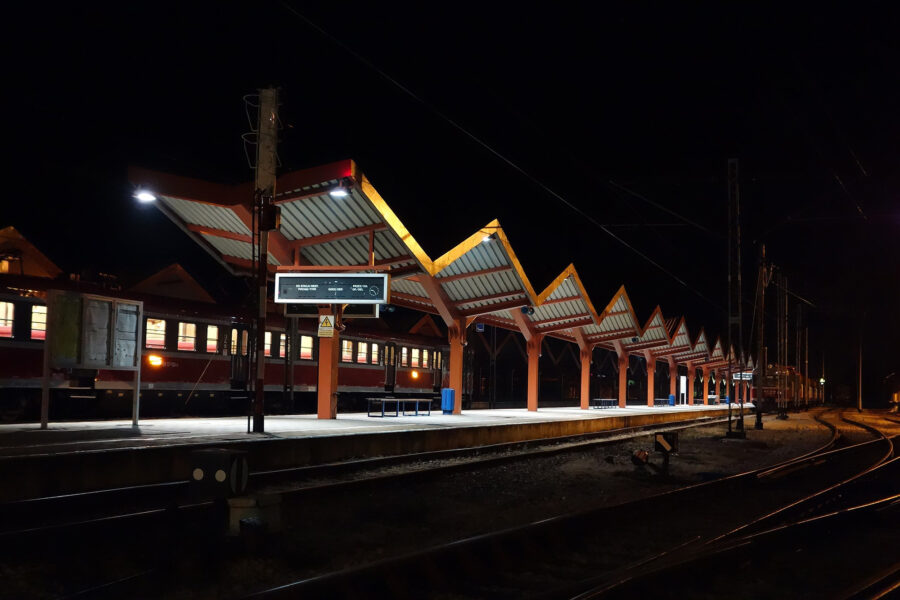
When we get into Przemyśl, it is about 6 o’clock in the evening. Usually, there is no time to buy food or water. However, this time, I had a 2 1/2 hour wait, enough time to go to Restauracja Cuda Wianki. I order pasta.
When the war began, Poland emerged as Ukraine’s chief ally. Cots were set up at the train station for incoming refugees, who were offered large jugs of water. Sanitary products were on hand for the women. Not anymore. The station no longer has makeshift beds available. The free trains out of Poland stopped long ago. Most of the volunteers have left. A small welcome center remains, but the border guards no longer seem interested in helping refugees, and their tone is less than welcoming.
Once you board the Ukrainian-run train to Kyiv, the atmosphere lightens up considerably. The Ukrainians have been running these trains without stopping since the invasion. First-class sleeper compartments have two bunk beds. The economy section has four bunks in a compartment. I take economy.
Ukrainian Railways has done everything it can to make the trip as comfortable as possible. The beds are made of the kind of plastic that covers the cushions you see in a doctor’s exam room, and are equipped with a pillow, mattress topper, and fresh linen. The gentle, rhythmic rocking of the train tends to lull you into sleep. After Polish customs, Ukrainian border guards in military uniforms come on the train at Medyka. They check everyone’s identity papers, stamp my American passport, check my media credentials, and before I know it, I am asleep.
At around 7 p.m., we pulled into the station at Kyiv. I gather my gear and check into an Airbnb in Kyiv. Shortly afterward, the Russians begin bombing Kyiv, and I begin a month of reporting on the war.
The trip in and out of Kyiv might be a tedious odyssey spanning three countries, but it is only a prelude to the real thing: to actually be in Ukraine. The railway is an essential link for thousands of people convinced that Ukraine is worth saving. It’s a long ride, but it’s worth it.
